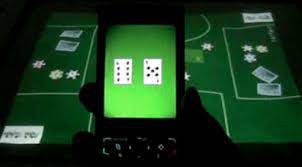Topology is the study of the connections and dissimilarities between various phenomena or events. It is a general understanding that whatever occurrence occurs within an event, there is a corresponding opposite event or reaction to that occurrence. The learning and memory strategies employed by players is normally an StrategicallyImportant Pattern of the occurrence of the event. The Event memory was first introduced by Gonzaga in his book “Times Tables” which details the techniques of playing the roulette.
Event memory is the memory of an event. It is the memory of a single “mini-check” that a player remembered well. This single mini-check can later on influence his next move when he plays in a similar game.
Small and big blinds are the two symbols on the left side of the player. They indicate the small and big bets, respectively. The big blind is equal to the small bet whereas the small blind is half of the big bet.
There are plenty of “Mini-Check” games offered in the Internet. A “Mini-Check” is a Pokerrepublik Card where there are four spots: one small blind and four big blinds. In this case, if a player has executed a check-raise, the player does not have to pay the big blind, but has only to pay the small blind.
There are plenty of “In-Play” games that are offered on a regular basis. An in-play game is a game that is not yet scheduled to end. Non-ifying regular games ensure that players are maintaining an appropriate level of persistence.
When a player who has just joined a table wishes to make a request of a change to the dealer, the dealer changes the wager in accordance with the player’s request.
If the player who has won a pot wishes to reverse the win, he must speak to the dealer and request for the change.
The “no flop” option is the standard bet. When a player makes an initial bet, the player has the option to make a fold, noticing that, if he wants to continue playing, he only needs to call the original bet.
There are plenty of “Hidden” bets. In a game, there are some bets that are not shown to the other players. Hidden bets are different thoughts than standard bets. They are not shown to the other players, they are considered as part of the player’s hand.
When two players have almost the same hand, it is referred to as a copy and improves. The copy will remain as the hand for the players. The bet is referred to in the language of poker hand – two players’ hands “are both better than two players hands”.
Conclusion
This is a simple guide to the jargon of Poker, a language that may seem complicated to foreign eyes but offer an insight to the mind of a poker player. Before you go on to a game, see a few hands and remember the terminologies used.
By taking a little time to familiarise with the jargon of Poker, you will then be ready to play with native opponents.


